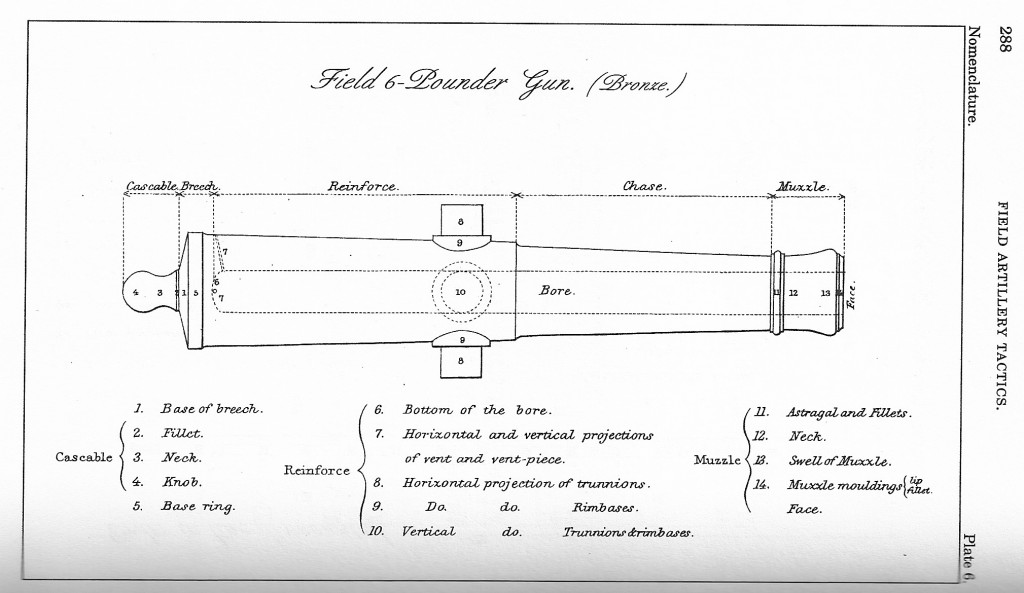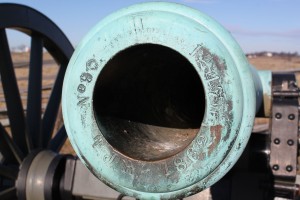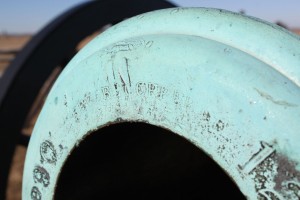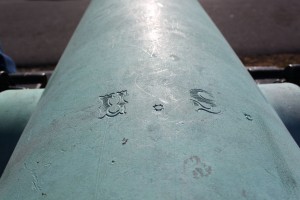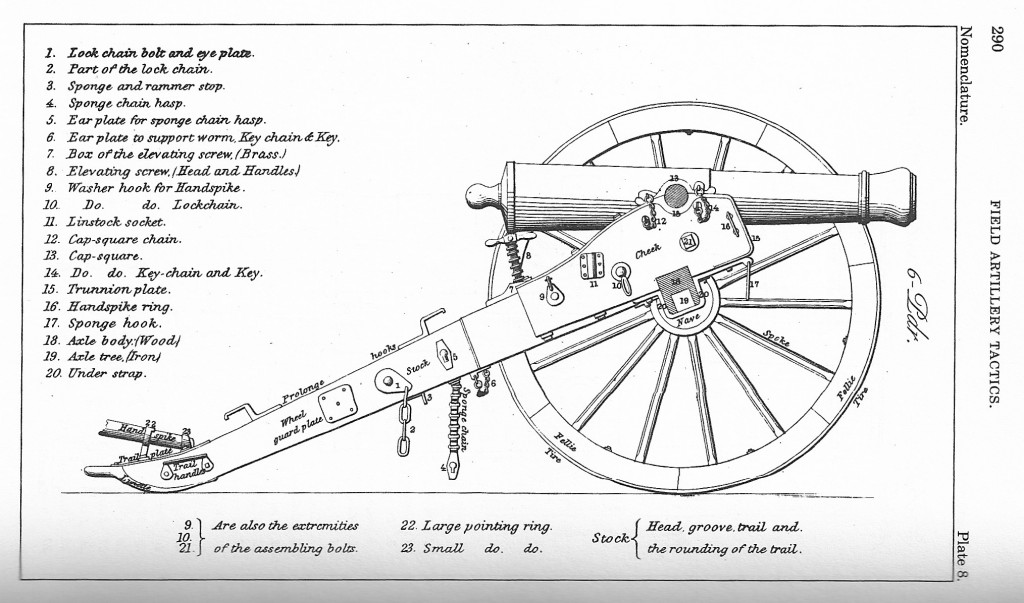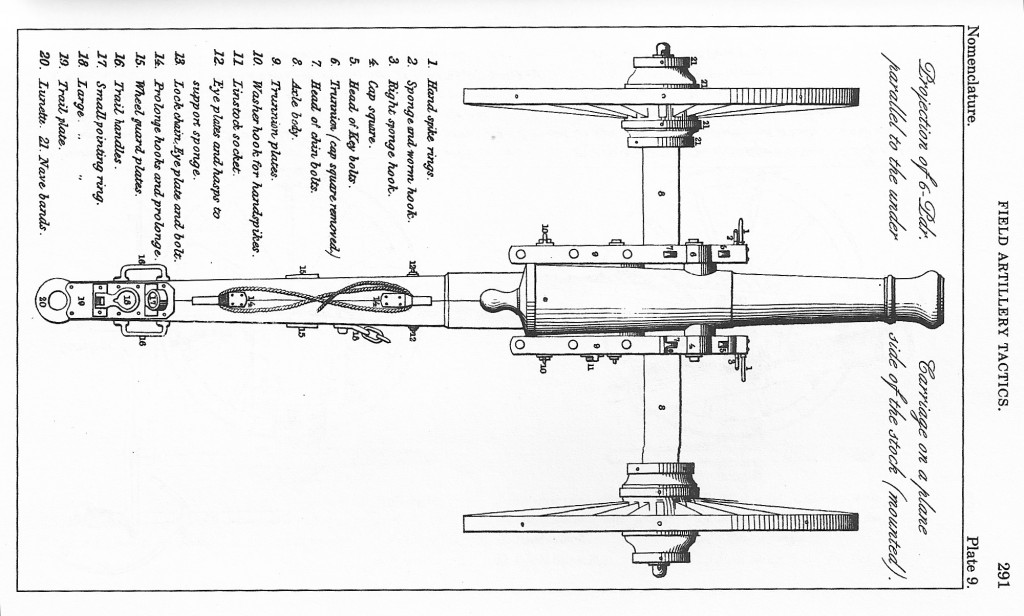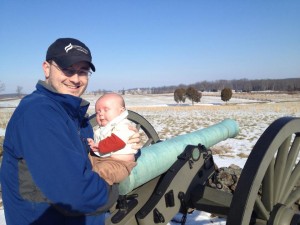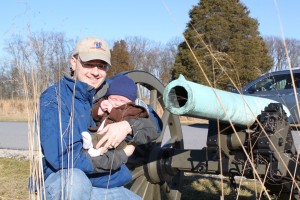Fredericksburg and Chancellorsville with Family
My wife, son, in-laws and I ended up taking our trip on Sunday. It was a really nice time.
We left the Baltimore area around 10am, and made it to Fredericksburg a little before noon. Our first stop was on the near side of the river in Falmouth, at Chatham Manor – an old plantation mansion dating back to the 1770s, currently owned by the NPS. Washington, Jefferson, and Lincoln all visited this house, and it’s apparently the only house that can boast of having hosted each of those men as guests at one time or another. Robert E. Lee also met his wife here. There were a few very grand old trees planted in the 1810s that made for popular photo subjects for our group. There were also plenty of interesting little architectural details on the house and grounds that attracted my wife’s camera, too. I was more interested in this guy, though:
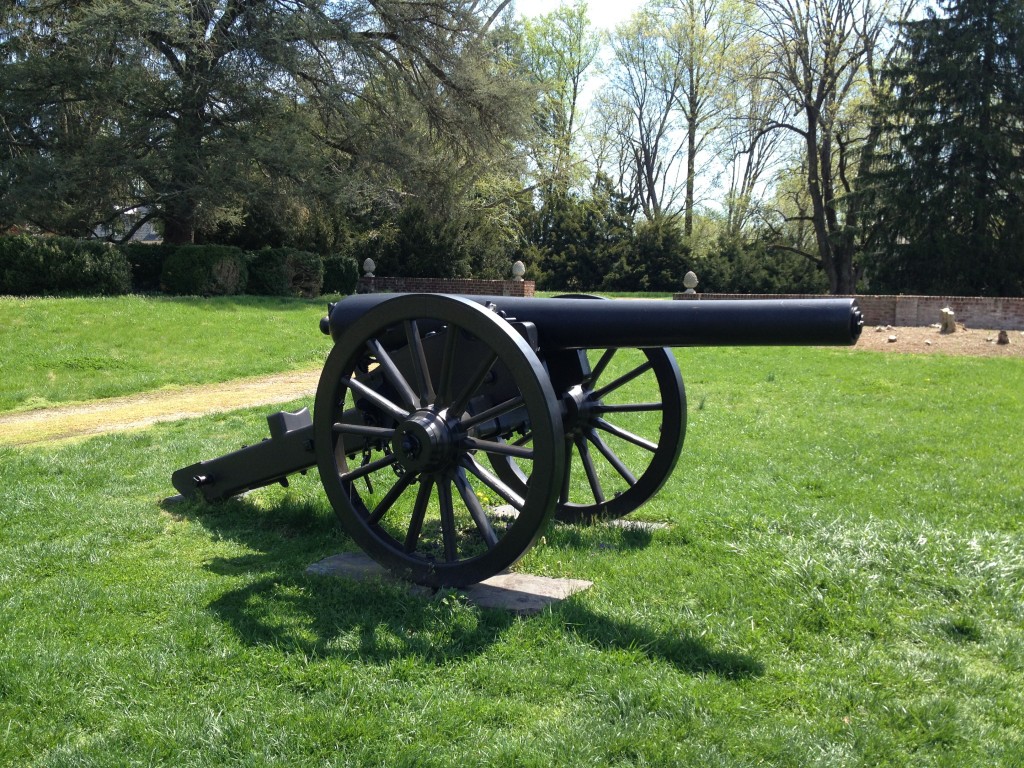
Here’s another shot so that you can get some context. I’m just a little under 6 feet tall:

Since my usual battlefield hangouts are Gettysburg and Antietam, I only ever see the smaller field pieces – these big siege guns are a treat to behold. They aren’t the only ones down there, either – the Confederate line has a few 30-pounder Parrots on display. Unfortunately, the markings on the 2 guns here at Chatham are almost totally unreadable. Either they have been worn off over time, or they’ve been painted-over a few too many times – perhaps both. It’s a shame because I’d love to know more about where these came from. Anybody have a good resource for that?
After Chatham, we crossed the Rappahannock (much more successfully than Ambrose Burnside and the Army of the Potomac did in 1862) and found our way through town to the Sunken Road section of the Fredericksburg battlefield. We walked along the stone wall, imagining the scene of brutal killing that took place a little more than 150 years ago in what is now a quiet neighborhood. Finally, we came to the original inspiration for the trip, the Kirkland Monument:
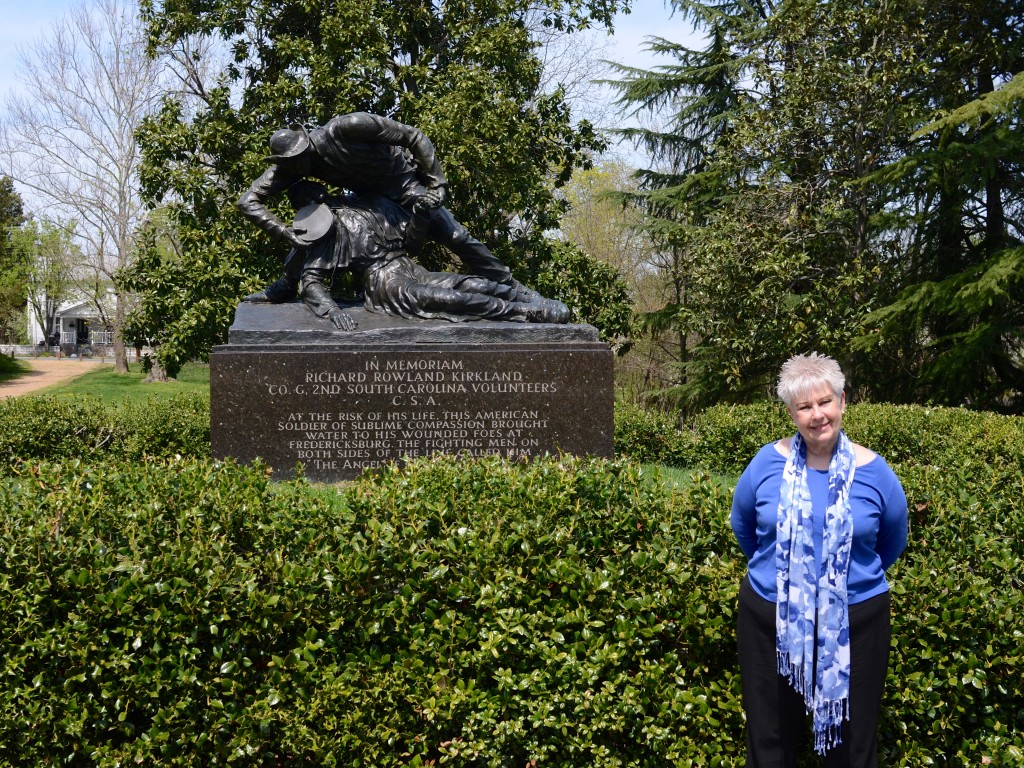
Reading the story of Richard R. Kirkland and seeing the monument was a touching moment for the group. A small sign of humanity in the midst of all the murderous destruction.
After the short walk back to the car, we drove down the rest of the Confederate line to the end at Prospect Hill, just so that everyone could get an idea of the scope of this battle and see the Confederate earthworks along the way.
We grabbed a quick late lunch outside of town and then went out to Chancellorsville. This time, we did a relatively quick driving tour of the field. We oriented ourselves at the visitor’s center (and saw the spot where Jackson was wounded). From there, we drove along the Confederate line to the Lee-Jackson Bivouac and Catherine’s Furnace so that I could explain the famous flank march. To get the Union perspective, we drove up to Hazel Grove (where I engaged in a little more artillery-nerdery) and then out the Plank road to the right flank of the Union line, where I explained Jackson’s surprise attack.
By then, it was getting a little late, and we had to get the baby home for bed, so we hit the road back to Baltimore. Everyone seemed to have had a good time (even John was well-behaved), and I think we all learned something and had new experiences – the hallmarks of a successful historical day trip.
The last Civil War adventure that we had with this part of the family was going out to the Antietam battlefield. Chronologically, the next battle in the east was Fredericksburg, then Chancellorsville – both of which we just covered yesterday. Now, the stage was set for Lee’s second invasion of the north. It’s pretty obvious what needs to happen now: I think when my niece and nephew come up for a visit in the summer, we’ll have to head to Gettysburg to keep the timeline going. That’s always a fun day.
